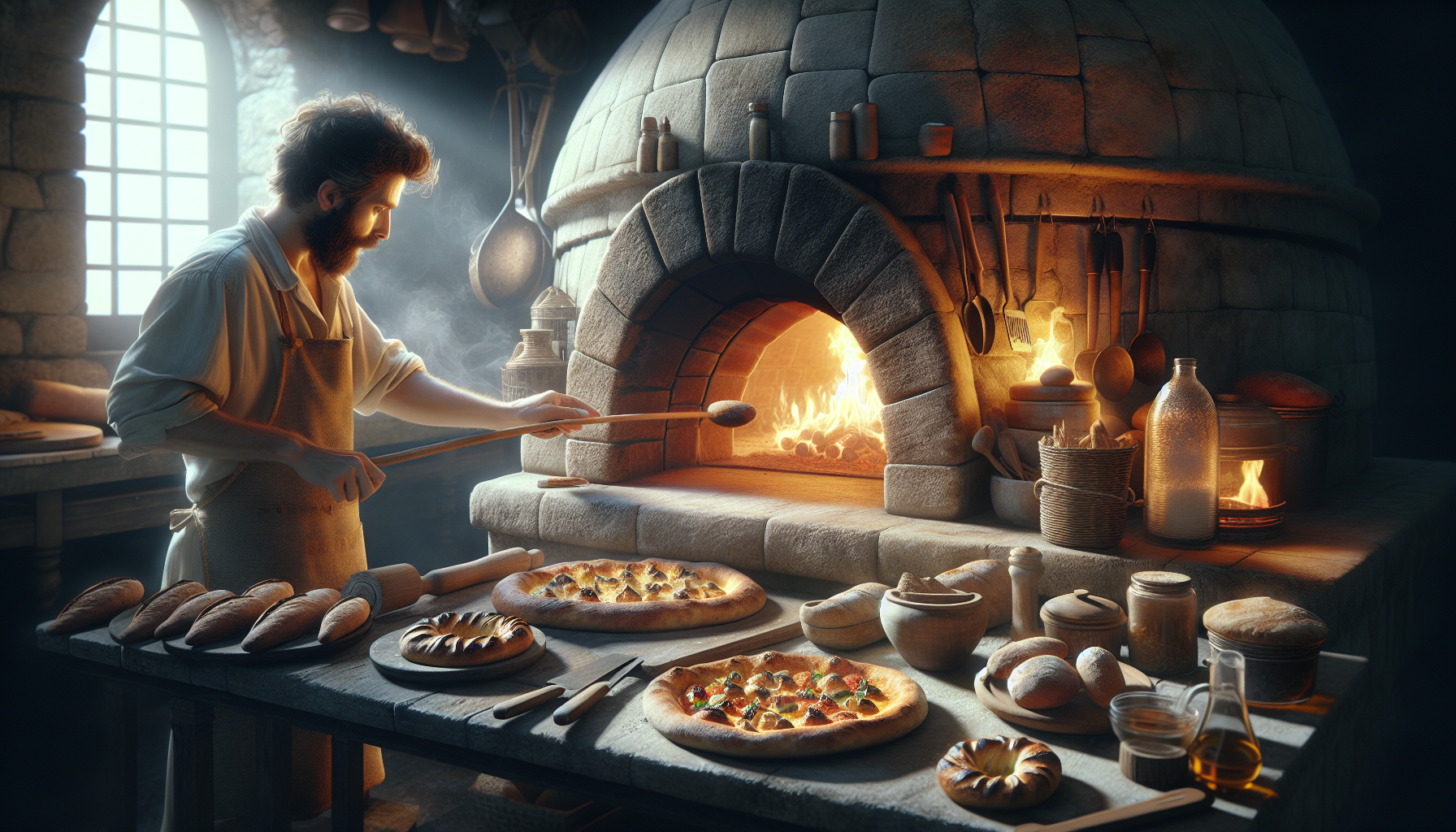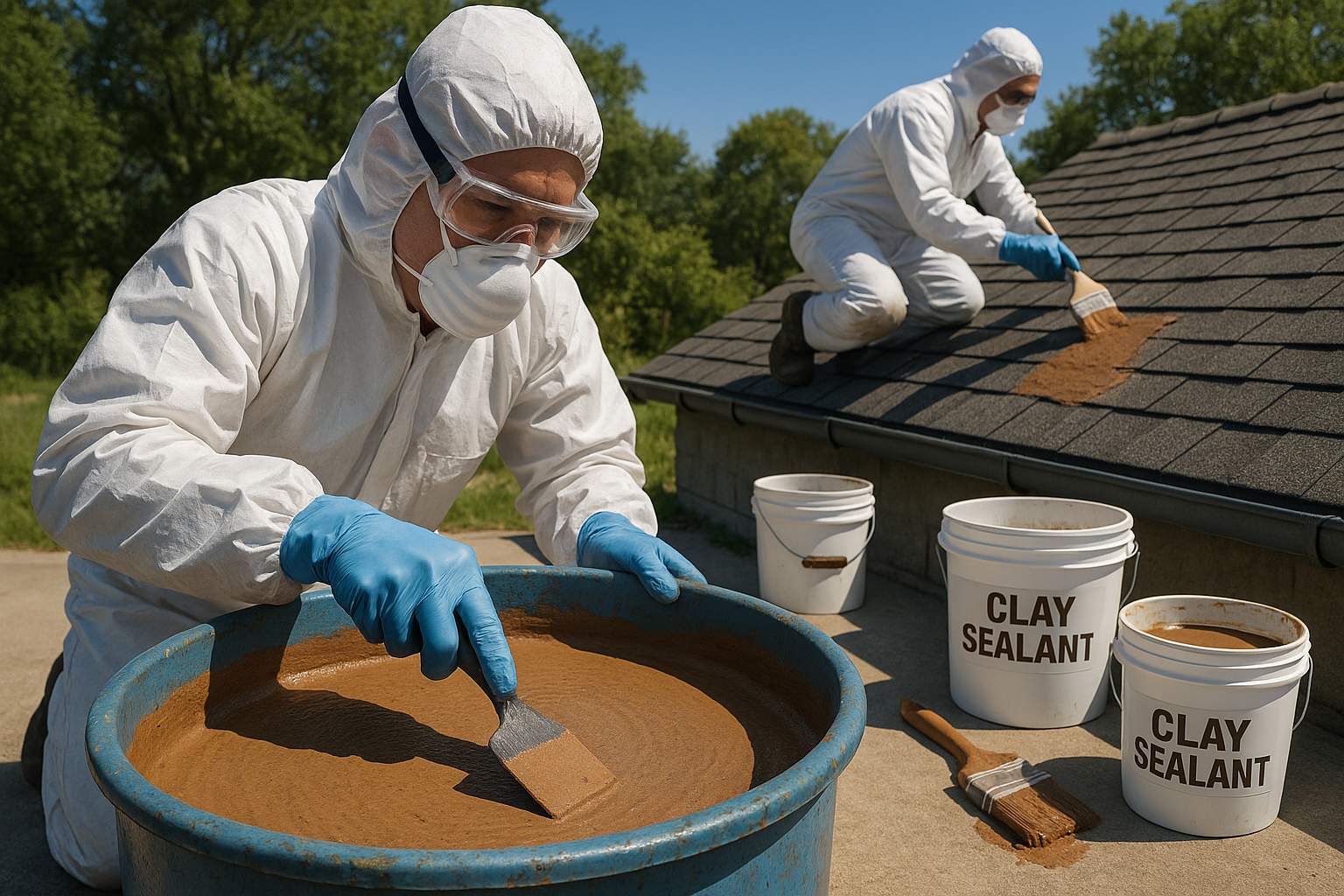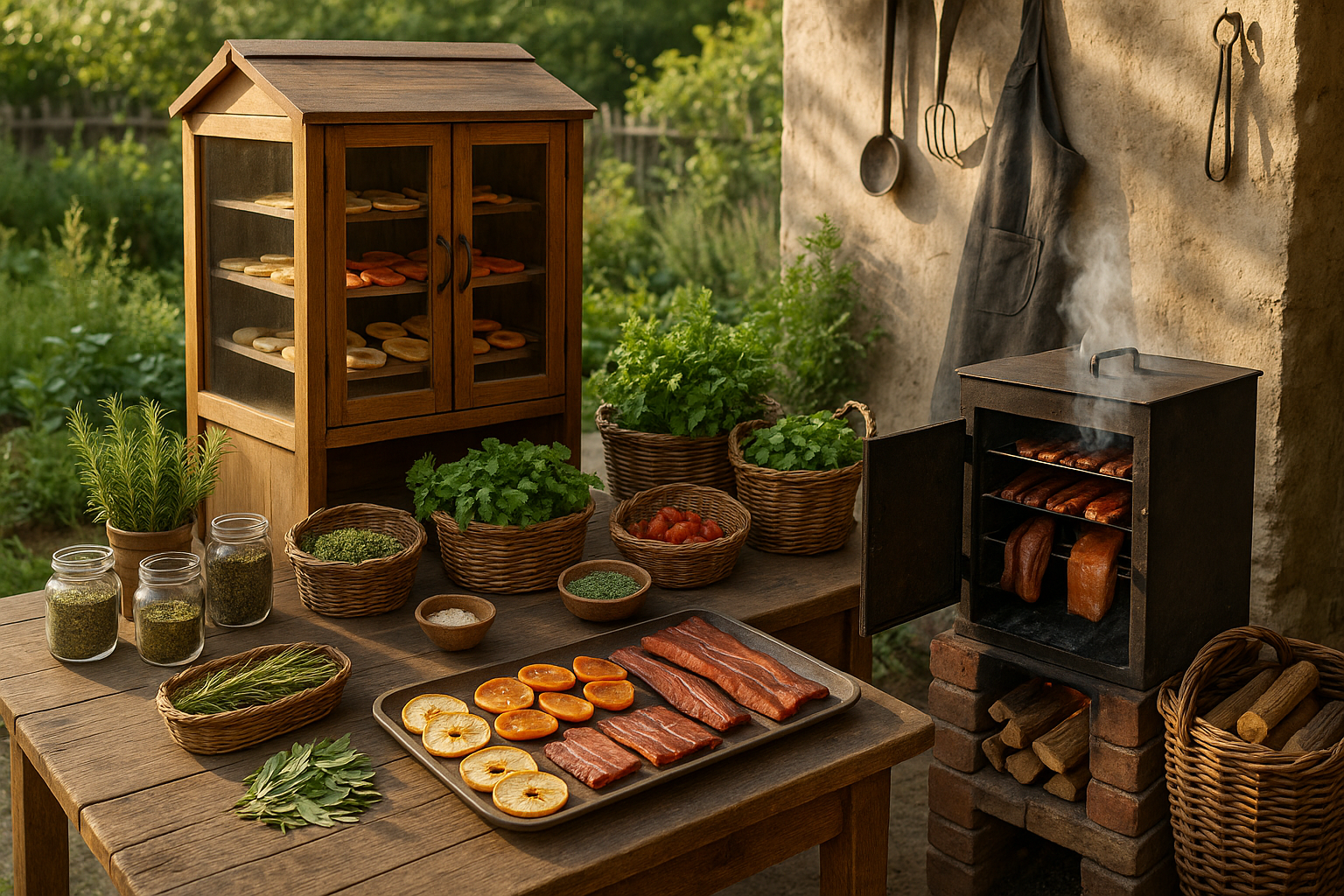In the heart of culinary traditions around the world, stone ovens have held a revered place for centuries, whispering tales of artisanal breads, rustic pizzas, and hearty casseroles cooked to perfection. As the world moves forward with cutting-edge technology and modern conveniences, these ancient ovens remind us of the profound wisdom embedded in traditional cooking methods. They beckon to chefs and home cooks alike, offering a promise of authenticity, depth of flavor, and a unique cooking experience that modern appliances often struggle to replicate. But what exactly is it about stone ovens that makes them so special? The answer lies in the fascinating concept of thermal inertia—a key player in the art of achieving perfectly cooked creations.
Imagine an oven that doesn’t just cook your food but transforms it. At its core, a stone oven is a masterpiece of engineering, designed to harness and maintain heat with unparalleled efficiency. This is where thermal inertia comes into play. It refers to the ability of a material to retain heat and release it slowly over time, providing a consistent and even cooking temperature. Unlike conventional ovens that struggle with temperature fluctuations, stone ovens, with their dense walls and floors, create an environment where heat is absorbed, stored, and radiated evenly. This results in dishes that are not only cooked thoroughly but also imbued with a depth of flavor and texture that’s hard to achieve otherwise. 🍕
In this article, we will embark on a culinary journey to explore the magic of stone ovens and how they can revolutionize your cooking experience. We will delve into the science behind thermal inertia, breaking down the principles that make these ovens a powerhouse of culinary perfection. From understanding the materials used in constructing these ovens to mastering the art of temperature control, you’ll gain insights that will empower you to harness the full potential of your stone oven.
As we journey further, we’ll discover the wide array of dishes that come to life in a stone oven, each benefiting from its unique cooking environment. Whether you’re baking a loaf of sourdough bread with a perfect crust and a chewy interior or roasting vegetables that are caramelized to perfection, the results speak volumes. We’ll share tips and techniques from seasoned chefs and bakers who have mastered the art of stone oven cooking, offering you a treasure trove of recipes that range from the traditional to the innovative.
Finally, we’ll explore the cultural and historical significance of stone ovens, tracing their roots across different cultures and time periods. From the ancient Roman and Greek civilizations to contemporary culinary hotspots, these ovens have been at the center of communal cooking and feasting, bringing people together through the universal language of food. As you turn the pages, you’ll find yourself inspired not only to create delicious meals but also to reconnect with a timeless tradition that celebrates the art of cooking as it was meant to be—slow, deliberate, and immensely satisfying. 🍽️
So, whether you’re a seasoned chef looking to elevate your craft or a curious home cook eager to explore new horizons, this article is your gateway to unlocking the full potential of stone ovens. Join us as we unravel the secrets of thermal inertia and embark on a delicious adventure that promises to transform the way you cook and experience food. Welcome to the world of stone ovens, where tradition meets innovation, and every dish tells a story.
The Timeless Appeal of Stone Ovens
Stone ovens, with their ancient roots and modern adaptations, offer a unique cooking experience that combines the rich tradition of culinary arts with contemporary efficiency. These ovens, often made from materials like brick, clay, or stone, are revered for their ability to retain and radiate heat evenly, a phenomenon known as thermal inertia. This property allows stone ovens to maintain a stable cooking temperature for extended periods, making them ideal for a variety of cooking techniques, from baking bread to roasting meats.
The concept of thermal inertia is integral to the operation of stone ovens. When the oven is heated, the stone absorbs and stores the heat, releasing it slowly and evenly over time. This ensures that the temperature remains consistent, reducing the risk of burning and allowing food to cook more thoroughly and evenly. Moreover, the unique design of stone ovens promotes natural convection currents, which circulate heat around the food, enhancing flavors and textures.
Using a stone oven is not just about the technical aspects of cooking; it’s about embracing a lifestyle that values patience, tradition, and the art of perfecting one’s culinary creations. The process of heating the oven, preparing the ingredients, and patiently waiting for the magic to happen is a rewarding experience that connects us to generations of cooks who came before us. It’s a culinary journey that invites you to slow down and savor the moment.
Understanding Thermal Inertia
Thermal inertia is a fundamental concept in physics that plays a crucial role in the functionality of stone ovens. It refers to the ability of a material to store and release heat. Materials with high thermal inertia, like stone, are excellent at maintaining a stable temperature over time. This characteristic is particularly beneficial in cooking, where consistent heat is essential for achieving optimal results.
One of the key advantages of thermal inertia in stone ovens is its ability to provide a steady cooking environment. Unlike metal ovens that can experience significant temperature fluctuations, stone ovens maintain a consistent heat, which is critical for certain recipes. For instance, baking bread requires a stable temperature to ensure that the crust forms properly without burning while the interior cooks to perfection.
Another benefit of thermal inertia is energy efficiency. Stone ovens can retain heat for a long time, which means they require less fuel to maintain the desired temperature. This makes them not only an effective cooking tool but also an environmentally friendly option. Additionally, the even distribution of heat in a stone oven helps prevent hot spots, ensuring that food is cooked uniformly.
The Versatility of Stone Ovens
Stone ovens are incredibly versatile, capable of handling a wide range of culinary tasks. Their ability to maintain high temperatures makes them ideal for cooking pizzas with perfectly crisp crusts. The intense heat of the oven creates a unique texture and flavor that is difficult to replicate with other cooking methods.
Bread baking is another area where stone ovens excel. The even heat distribution ensures that the dough rises evenly, resulting in a loaf with a perfect crust and fluffy interior. The moisture retained in the stone also helps create the steam needed for the crust to develop properly. Whether you’re making a rustic sourdough or a delicate baguette, a stone oven can enhance your bread-baking endeavors.
Roasting meats and vegetables in a stone oven results in a depth of flavor that is unparalleled. The consistent heat allows the natural sugars in vegetables to caramelize beautifully, while meats retain their juices, producing a tender and flavorful dish. The slow, even cooking also means that the nutritional value of the ingredients is better preserved.
Comparative Table: Stone Ovens vs. Conventional Ovens
| Feature | Stone Ovens | Conventional Ovens |
|---|---|---|
| Heat Retention | Excellent | Moderate |
| Cooking Consistency | High | Variable |
| Energy Efficiency | High | Low |
| Versatility | High | Moderate |
For those interested in seeing the magic of stone ovens in action, check out the video below for a visual guide on using a traditional stone oven:
Choosing the Right Stone Oven
Selecting the right stone oven involves considering several factors to ensure it meets your cooking needs. The size of the oven is an important consideration; a larger oven may be suitable for frequent entertaining or baking, while a smaller one might be ideal for personal use. Additionally, the type of material used in the construction of the oven can affect its performance. Clay ovens are known for their excellent heat retention, while brick ovens offer durability and a classic aesthetic.
Another crucial factor is the location of the oven. Outdoor stone ovens are popular for those who enjoy al fresco dining and entertaining. These ovens can become the centerpiece of an outdoor kitchen, providing both functionality and a rustic charm. Indoor stone ovens, on the other hand, require careful planning to ensure proper ventilation and space.
The choice between a pre-built oven and a custom-built one also comes into play. Pre-built ovens offer convenience and are often easier to install, while custom-built ovens allow for greater personalization in terms of design and size. Both options have their advantages, and the decision ultimately depends on your specific preferences and budget.
Checklist: What to Consider When Buying a Stone Oven
- Size: Determine the amount of space available and your cooking needs.
- Material: Choose between clay, brick, or stone based on heat retention and durability.
- Location: Decide whether you want an indoor or outdoor oven.
- Budget: Consider your financial constraints and the cost of installation.
- Customization: Decide between a pre-built or custom-designed oven.
Maintenance and Care for Longevity
Proper maintenance and care are essential to ensure the longevity and performance of your stone oven. Regular cleaning is crucial, as it helps prevent the buildup of soot and food residues, which can affect the oven’s efficiency and the flavor of your food. It is recommended to clean the oven after each use, allowing it to cool down before wiping away any debris.
Inspecting the oven regularly for cracks or damage is also important. Over time, exposure to high temperatures can cause wear and tear. Addressing any issues promptly can prevent further damage and extend the life of your oven. Additionally, periodically sealing the surface of the stone can help protect it from moisture and enhance its heat-retaining properties.
For those interested in learning more about maintaining a stone oven, consider watching tutorials and reading guides from reputable sources. Many online resources offer step-by-step instructions and tips on keeping your oven in top condition.

Conclusion
In conclusion, the exploration of stone ovens and their remarkable thermal inertia has provided us with a profound understanding of how ancient cooking methods continue to hold relevance in our modern culinary world. Throughout this article, we delved into the unique properties of stone ovens, uncovering their ability to retain and evenly distribute heat, which results in perfectly cooked dishes that tantalize the senses.
The journey began with an overview of the historical significance of stone ovens, tracing their origins back to ancient civilizations where they were integral to daily life. We examined how these ovens were meticulously crafted using natural stones, each selected for its thermal properties. This historical context underscored the enduring value of traditional cooking techniques, which have stood the test of time due to their efficiency and effectiveness.
Next, we explored the science behind thermal inertia, highlighting how stone ovens maintain a consistent temperature over extended periods. This attribute not only ensures that food is cooked thoroughly but also enhances the flavors, textures, and aromas of the culinary creations. By understanding the principles of thermal inertia, chefs and home cooks alike can elevate their cooking skills, producing dishes that are not only delicious but also infused with a touch of authenticity and tradition.
Moreover, we discussed the versatility of stone ovens, showcasing their ability to bake a variety of foods, from rustic breads and pizzas with perfectly crisp crusts to succulent roasts that retain their juiciness. The adaptability of stone ovens makes them a valuable asset in any kitchen, offering endless possibilities for culinary experimentation and creativity.
The environmental benefits of using stone ovens were also addressed, as their efficient heat retention reduces the need for constant energy input, making them an eco-friendly option for sustainable cooking practices. This aspect aligns with the growing global emphasis on reducing our carbon footprint and adopting more sustainable lifestyles.
In reinforcing the importance of this topic, it is crucial to recognize the resurgence of interest in traditional cooking methods, particularly among those seeking authenticity and a deeper connection to their food. Stone ovens embody a harmonious blend of art and science, where the mastery of ancient techniques meets the demands of contemporary cuisine.
As we conclude, I encourage you to reflect on the timeless appeal and practicality of stone ovens. Whether you are a professional chef or a passionate home cook, embracing the power of stone ovens can transform your culinary endeavors, allowing you to create meals that are not only delicious but also steeped in history and tradition.
I invite you to share your thoughts and experiences with stone ovens in the comments section below. Have you ever cooked with a stone oven? What challenges or successes have you encountered? Your insights could inspire others to embark on their own culinary journey with these remarkable ovens.
Furthermore, consider sharing this article with fellow cooking enthusiasts, friends, or family members who may be intrigued by the idea of harnessing thermal inertia for perfectly cooked creations. By spreading the knowledge and appreciation of stone ovens, we can keep this ancient art alive and thriving in our modern kitchens.
Finally, I encourage you to experiment with stone ovens in your own cooking practices. Whether it’s building your own stone oven or finding a local bakery that uses traditional methods, take the opportunity to experience the unique results that only thermal inertia can provide. The journey of discovery and mastery is ongoing, and there is always more to learn and create.
Thank you for taking the time to explore this topic with me. May your culinary adventures with stone ovens be rewarding and filled with delightful surprises! 🍞🔥
For further reading, you may explore resources like The Art of Stone Baking or Sustainable Cooking Practices, where you can find more information on traditional cooking techniques and their modern applications.
References:




